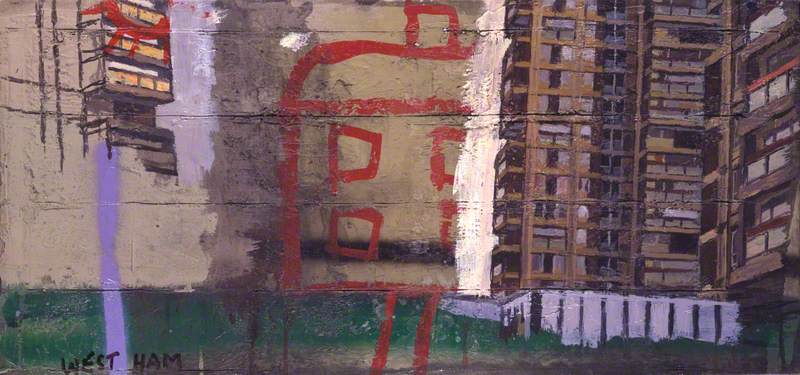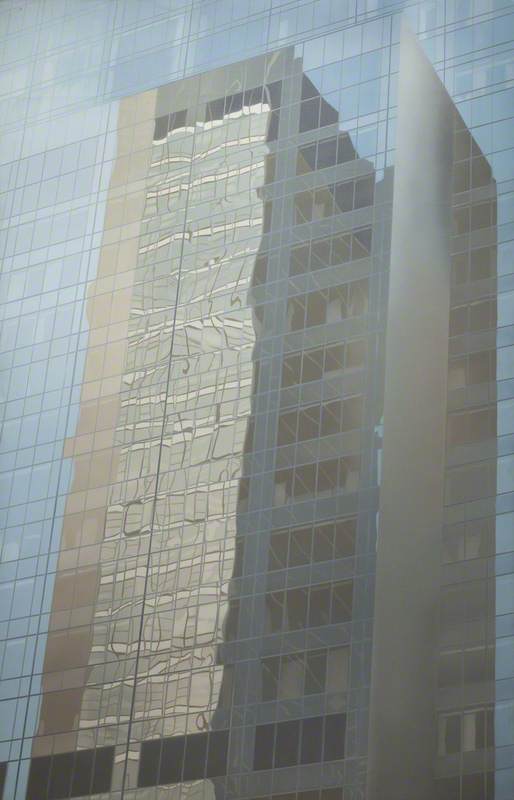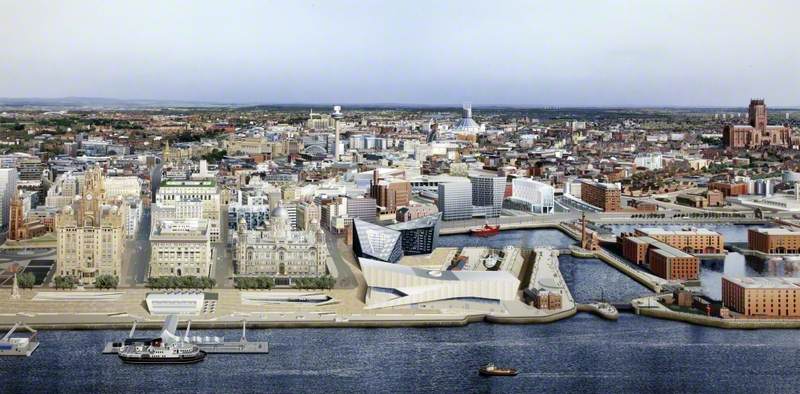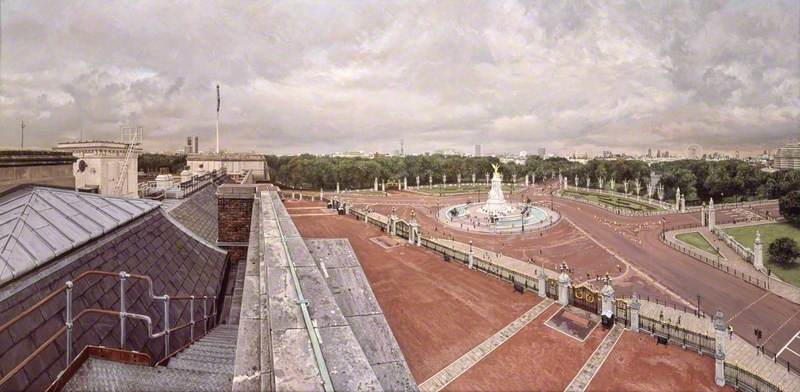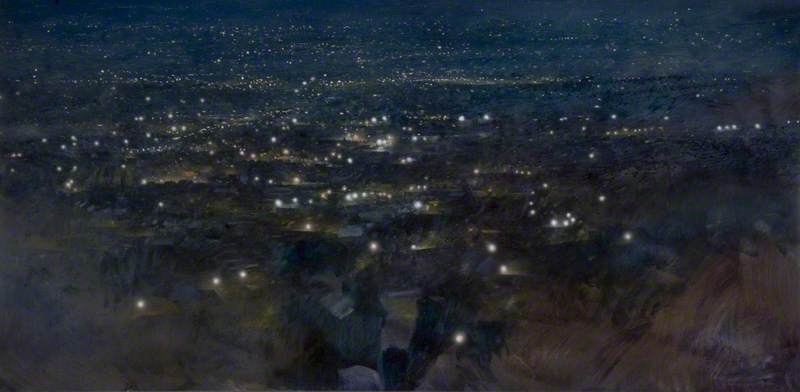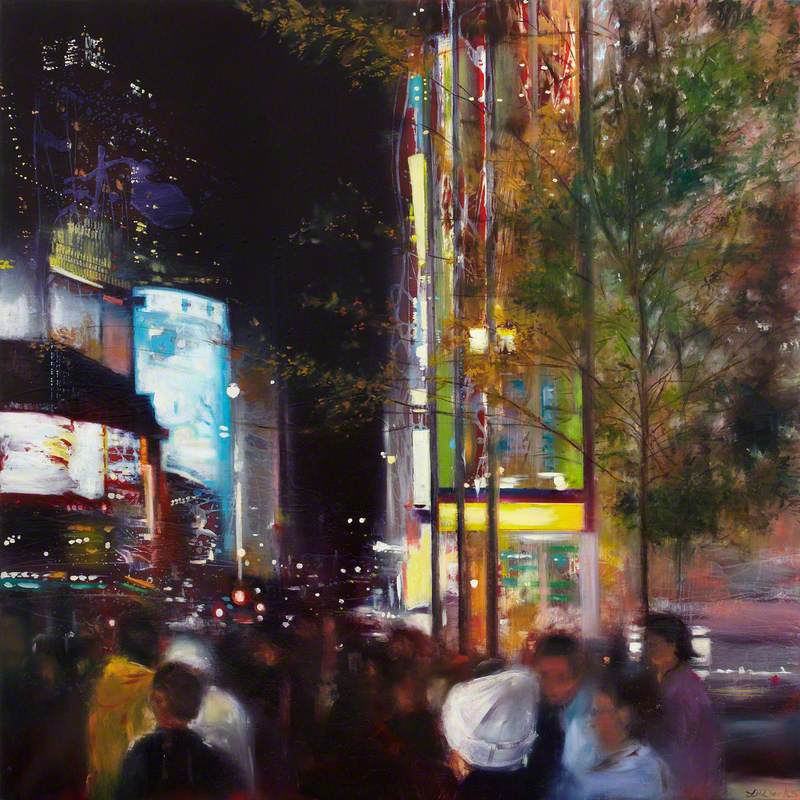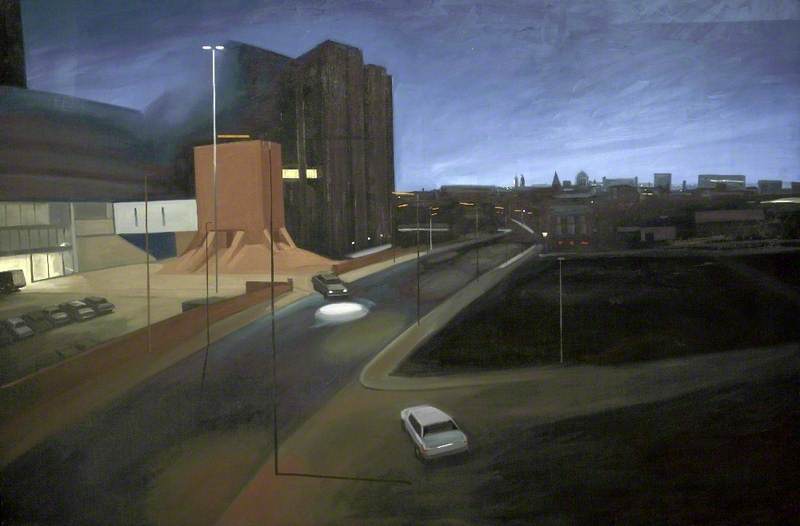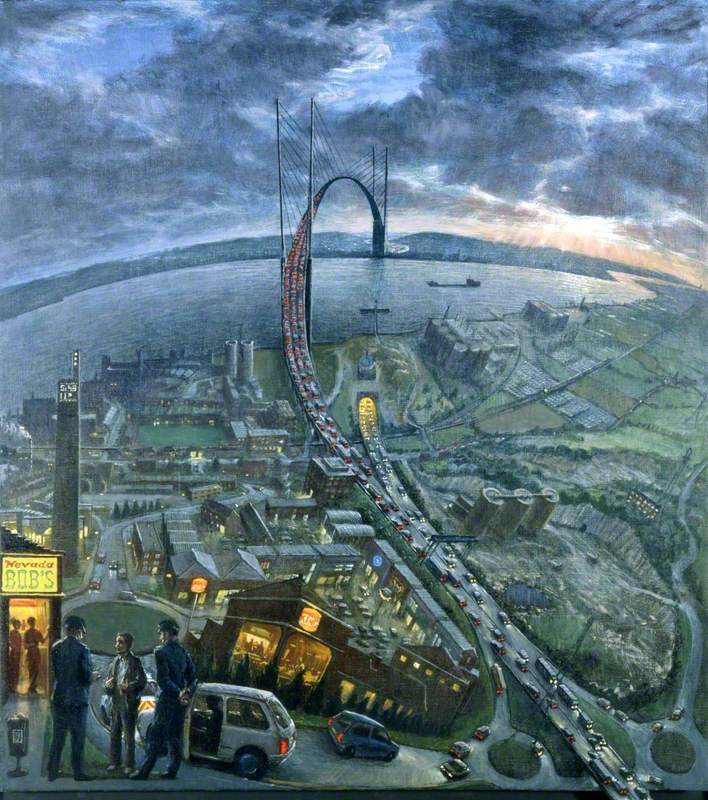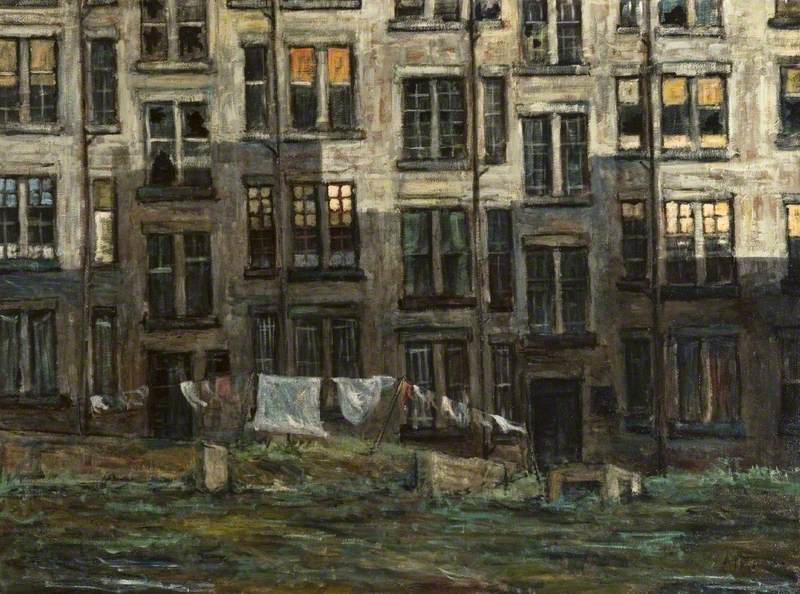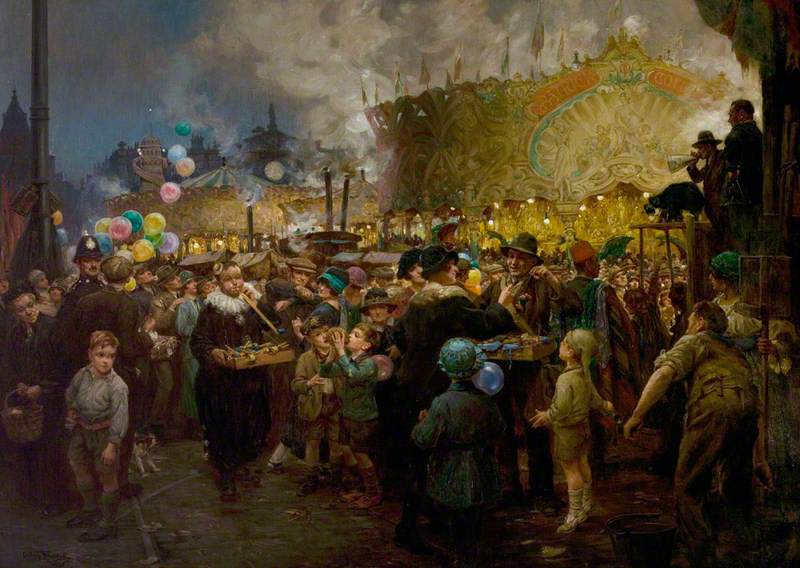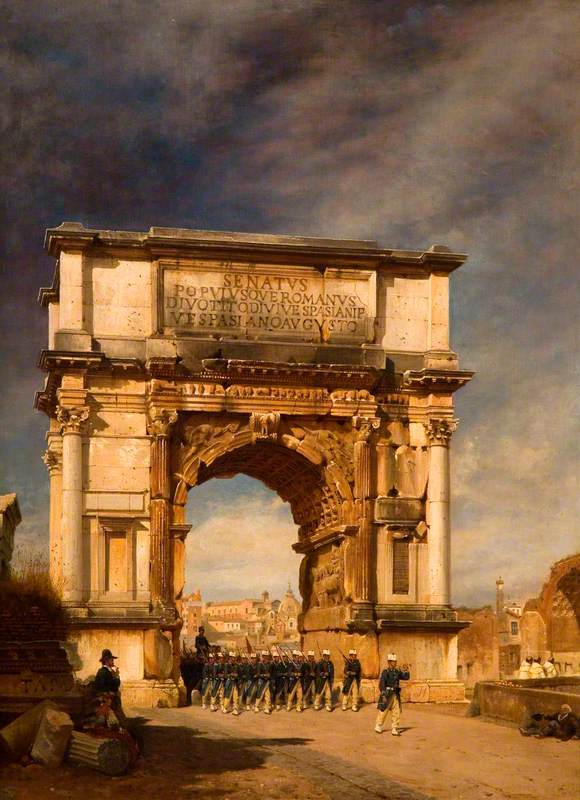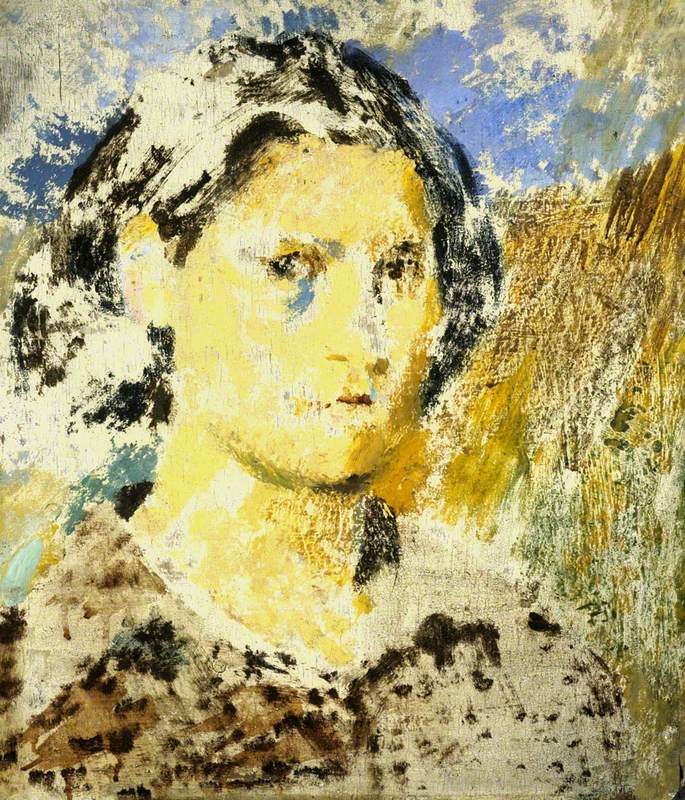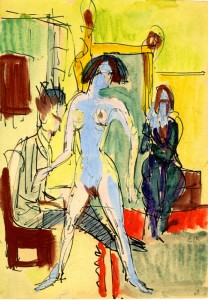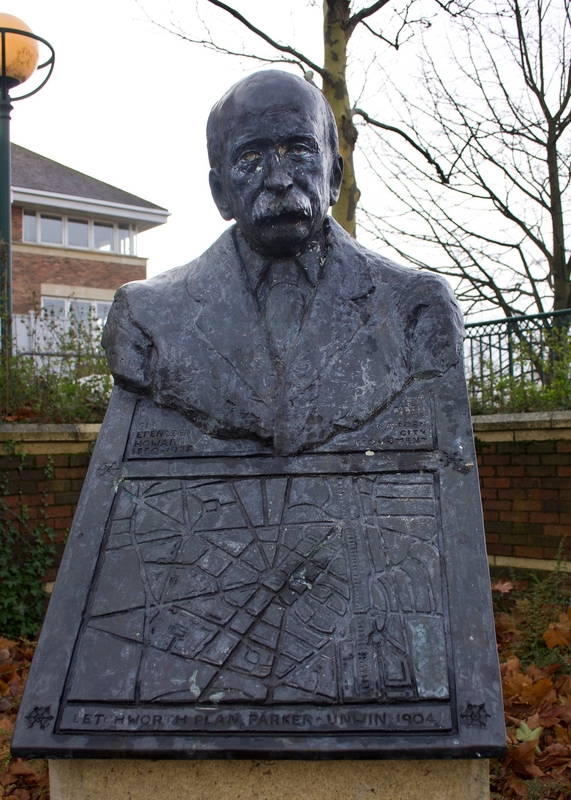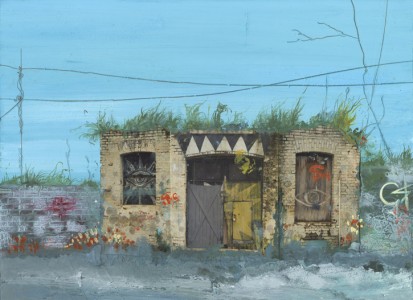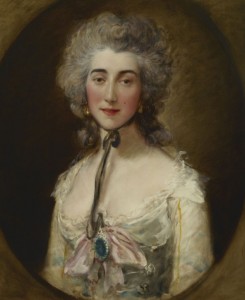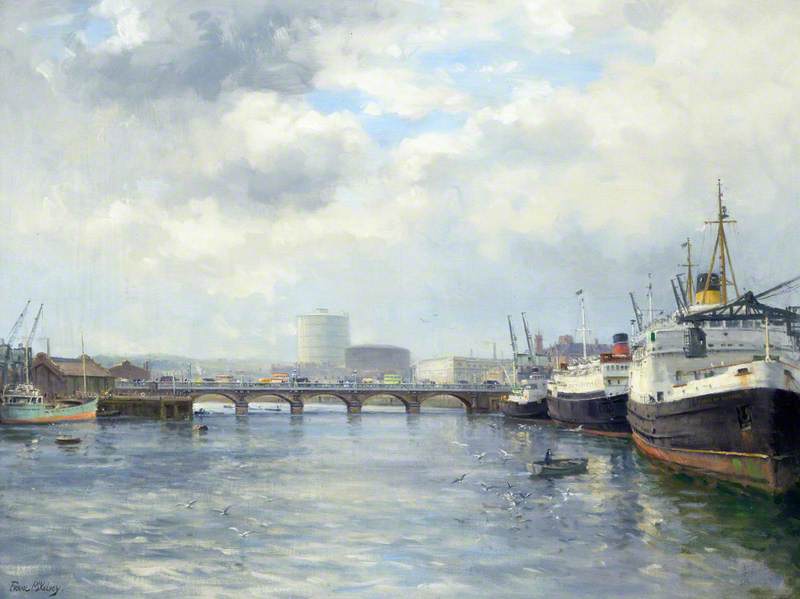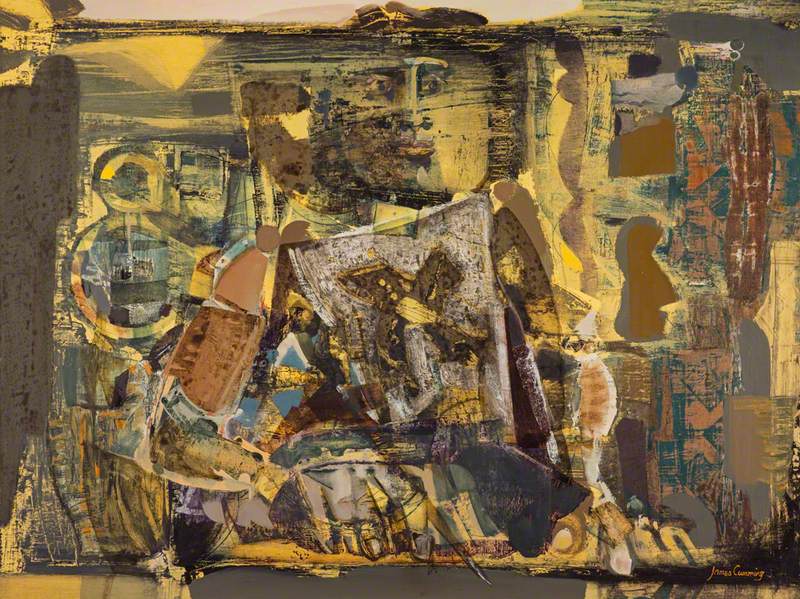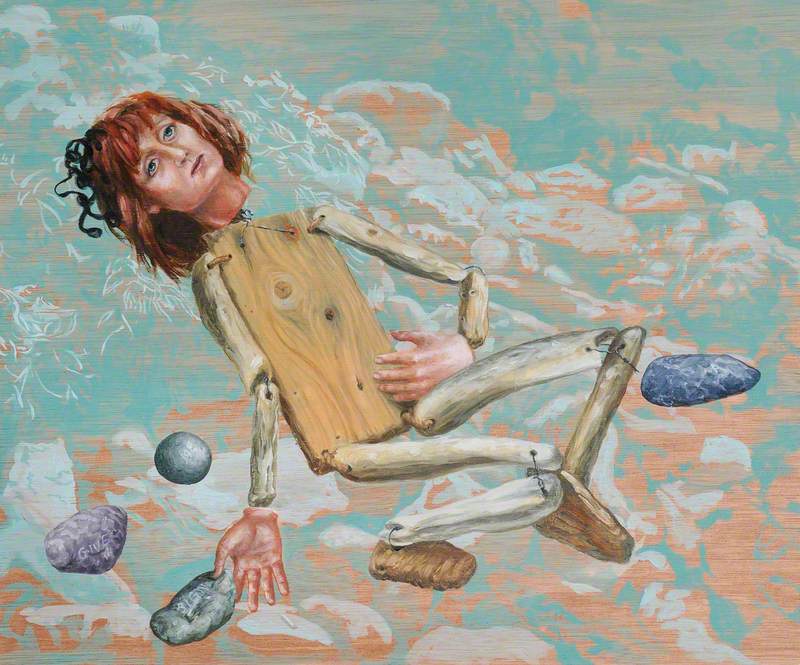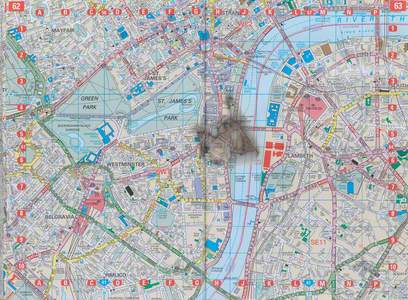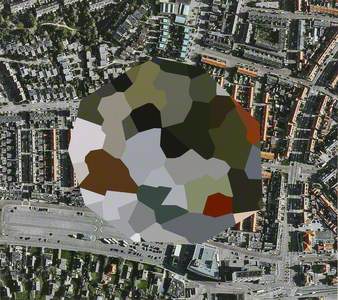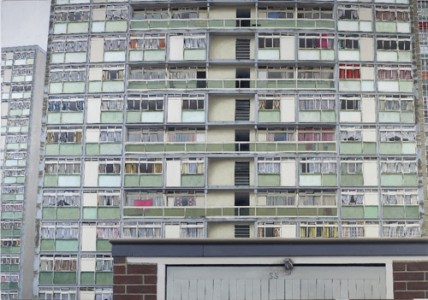For centuries artists have been inspired, commissioned and compelled to create cityscapes. From Claude de Jongh's views of medieval London to Canaletto's timeless paintings of Venice, the expansive, ever-changing skyline of the urban environment has proved difficult to resist.
Yet the modern city has also proved to be a rich source of inspiration for many post-war and contemporary artists. For some, it is a place to be recorded as precisely as possible, while for others it offers moments of unexpected beauty. Furthermore, many recent artists have developed innovative techniques and unconventional approaches to ensure its relevance in contemporary art.
Arrangement in Turquoise and Cream
1979–1981
David Hepher (b.1935) 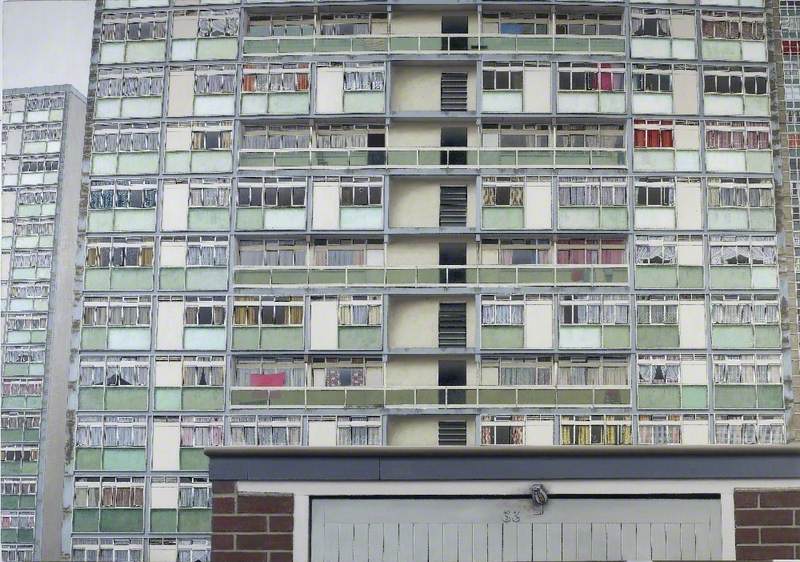
Among the most committed painters of the modern city is David Hepher. Since the 1970s he has painted London's social housing blocks, recording their towering facades in intricate detail. He has described this style of architecture as having an 'austere grandeur'. Arrangement in Turquoise and Cream, which is a quintessential example of his work, shows the repetitively geometric exterior of a high-rise estate. Painted from a low angle, the picture conveys the imposing scale of this type of inner-city housing as well as the numerous homes it provides for people.
In Study, Hepher has painted a seemingly non-descript tower block but has overlaid the image with graffiti that often adorns such buildings. While some might see this painting as a commentary on urban decay, Hepher, in fact, encourages the viewer to see these monumental residential housing estates in a positive light, knowing full well that they are often derided. 'I would like to think that the pictures could make people look differently at the flats around them,' he has said, 'to see beauty in objects that they normally dismiss as ugly.'
The photorealist painter Brendan Neiland shares David Hepher's interest in city architecture, but often focuses on the rippling reflections seen against the towering glass and steel structures of the urban environment. Typical of his work, Building Projection captures an eloquent interplay between shimmering light and the facades of corporate architecture.
Explaining this source of inspiration, Neiland has said: 'So much of the city is observed through reflection. In a sense, it is far more real than the buildings themselves...It helps to give the feeling of movement and activity and life of the city.'
In 2005, the internationally acclaimed artist Ben Johnson was commissioned to paint a view of Liverpool to be completed for the city's role as European Capital of Culture in 2008. The three years of labour-intensive production saw Johnson and his team of assistants produce a minutely detailed panorama of Liverpool's famous skyline from a bird's-eye view above the River Mersey.
Over 3,000 reference photographs and 20,000 stencils were used to ensure every aspect of this view of Liverpool was accurately painted. Interestingly, had Johnson worked alone on this colossal canvas (it measures nearly five metres in length), it would have taken him 18 years to complete. Today, The Liverpool Cityscape remains one of the most ambitious cityscapes ever painted.
Another painter of forensically detailed cityscapes is Clive Head. Commissioned by The Museum of London to celebrate Queen Elizabeth's Golden Jubilee of 2002, Head produced a topographic view of London from the roof of Buckingham Palace. This unusual viewpoint is usually seen by only a fortunate few and affords the viewer a sweeping panorama of London's famous skyline, featuring its many historic and modern landmarks.
Robert Perry has spent much of his life painting the vast urban sprawl of the Black Country in the West Midlands. He paints outdoors and in all weather to produce acutely observed and highly atmospheric urban views. His paintings are a reminder that the urban landscape is completely transformed by nightfall. Landmarks and geographic features visible by day are erased by darkness and replaced by an ethereal constellation of glowing lights.
Being amidst a busy city can be a life-affirming experience but also a disorientating one. The noise, lights, colours and ceaseless movement can be a sensory overload. The frenetic atmosphere of a dynamic city is convincingly captured in City Nocturne by Lesley Anne Derks.
A recurring theme in recent cityscape painting has been the negative impact of the city on the individual. For some people, a city can create feelings of alienation and detachment. In Maurice Cockrill's Nocturne to the City, the characterless streets and oppressive architecture create a decidedly eerie and unwelcoming atmosphere.
Lights II: The Ship Engulfed
1972
Michael Andrews (1928–1995) 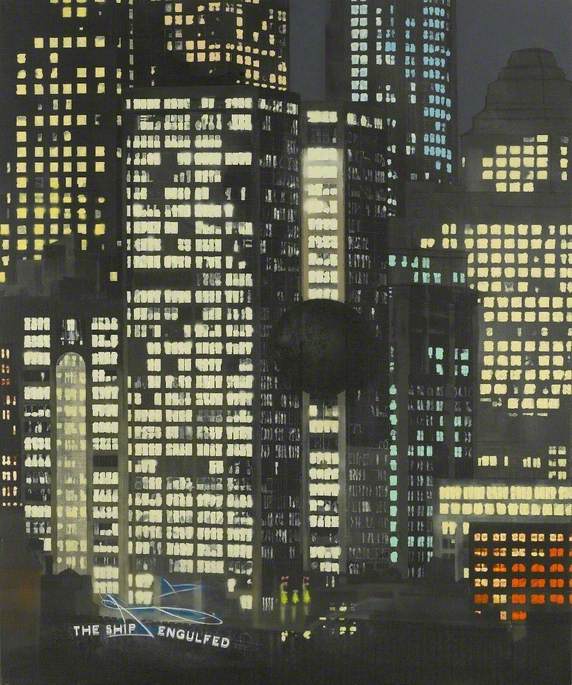
A similar quasi-dystopian mood permeates Lights II: The Ship Engulfed by Michael Andrews. The monotonous skyscrapers reflect an absence of character typical of modern city architecture and express nothing about the lives of the anonymous individuals who live and work in these monumental structures.
Many urban landscapes often convey – intentionally or not – the smallness of man and the insignificance of individuality in the domineering presence of urban structures. These themes are both evident in Arrest at Nevada Bob's by Julian Bell. The painting (named after an incident in the foreground) shows the Dartford Crossing over the River Thames.
Despite being an actual place, there is an otherworldly quality about this view. The dizzyingly high viewpoint, warped perspective, gridlocked traffic, bleak industrial buildings and encroaching darkness give the painting an undeniably dystopian mood. Yet the artist has said that the real subject is 'the road itself, which goes on forever'.
Meteorite Lands on the Houses of Parliament
(edition 4/20) 1998
Cornelia Parker (b.1956) 
Some artists have taken alternative approaches to the city as a subject matter. In Meteorite Lands on the Houses of Parliament, Cornelia Parker used an A to Z map of London and heated a fragment of a meteorite to create a scorch mark. The artwork is about destruction, external threats and human vulnerability. By using a map of London, with its recognisable locations, Parker enables the viewer to relate to a specific place and, therefore, easily imagine the consequences of an attack, whether it be natural or man-made.
Unknown Site, Noordwijk aan Zee, South Holland
2011
Mishka Henner (b.1976) 
The Dutch artist Mishka Henner has followed Cornelia Parker by appropriating everyday urban imagery for his art. In his series 'Dutch Landscapes', he utilised the satellite imagery used by Google Earth. When this technology was made publicly available, governments feared national security threats by the sudden visibility of sensitive locations. The Dutch government in particular 'hid' significant sites by imposing bold, multi-coloured polygons over them resulting in unsubtle abstract imagery.
Here, the built-up environment is not merely a mass of buildings and streets, but a place of potential interest to hostile states. Yet the absurdly prominent central shape only serves to draw attention to a site of undisclosed importance.
The way we view and experience cities has changed over time and this is reflected in modern and contemporary art. As cities get ever bigger and are faced with new social and environmental challenges, artists will no doubt respond with increasingly engaging, imaginative and thought-provoking cityscapes.
Jonathan Hajdamach, independent art historian
This content was supported by Freelands Foundation as part of The Superpower of Looking
Discover our learning resource on David Hepher's Arrangement in Turquoise and Cream
